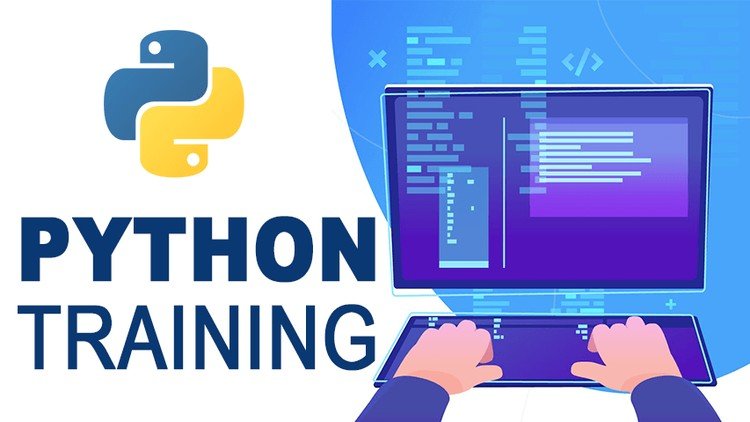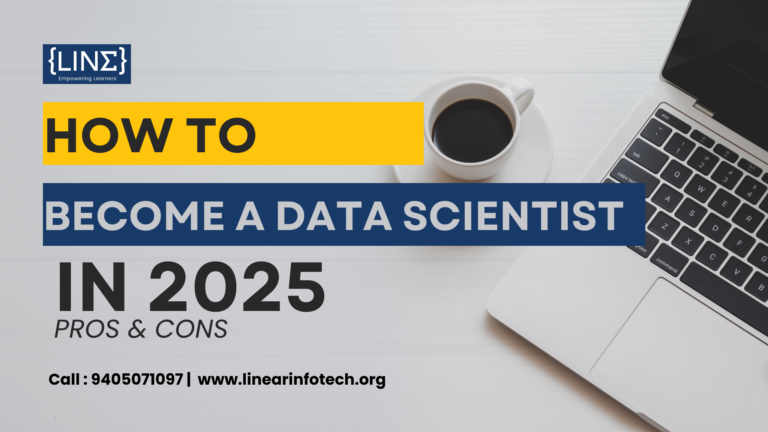Introduction to Data Mining with Python
In today’s data-driven world, insights from large datasets fuel decision-making in every field—from healthcare and finance to marketing and cybersecurity. However, raw data in itself holds little value without proper analysis. That’s where data mining comes into play, transforming vast amounts of information into actionable insights. Python, a versatile programming language, has become one of the top choices for data mining due to its simplicity, extensive library support, and robust community.
In this article, we’ll take a comprehensive look at how data mining works with Python, exploring its techniques, libraries, and the steps you need to get started.
What is Data Mining?
Data mining is the process of discovering patterns, relationships, and anomalies in large datasets. Using statistical methods, algorithms, and machine learning models, data mining helps uncover valuable insights, driving strategic business decisions and predictive analytics.
For example, in e-commerce, data mining is used to recommend products based on a user’s purchase history. In healthcare, it helps predict disease outbreaks or patient health outcomes by analyzing medical records.
Why Use Python for Data Mining?
Python is widely recognized for its ease of use, making it an excellent language for both beginners and experts. Python offers a rich ecosystem of libraries tailored for data mining, which simplifies every step—from data preprocessing to the application of complex algorithms.
Advantages of Python for Data Mining:
- Simple syntax: Python’s readability makes it accessible for newcomers and experts alike.
- Vast libraries: Tools like Pandas, Scikit-learn, and NumPy offer pre-built functionalities, reducing development time.
- Scalability: Python handles large datasets and can be integrated with big data frameworks like Hadoop or Spark.
- Community support: With a thriving community, Python users have access to tutorials, forums, and extensive documentation.
The Fundamentals of Data Mining
The process of data mining involves several key stages:
1. Data Collection
Data is gathered from various sources, including databases, sensors, and user interactions. For example, a retail store might collect data from sales transactions, online reviews, and customer surveys.
2. Data Cleaning and Preprocessing
Raw data is often incomplete, inconsistent, or noisy. Cleaning involves handling missing values, correcting errors, and ensuring the dataset is accurate.
3. Feature Selection
Feature selection identifies the most relevant variables (features) for the analysis, eliminating irrelevant or redundant data. For instance, when predicting house prices, features like location, square footage, and number of bedrooms might be crucial.
Common Techniques in Data Mining
Several techniques are used to analyze and interpret data:
1. Classification
Classification algorithms categorize data into predefined classes. For instance, emails are classified as “spam” or “not spam” using algorithms like decision trees or support vector machines.
2. Clustering
Clustering divides data into groups based on similarity. The K-means algorithm, for example, clusters customers based on purchasing patterns, which businesses can use for targeted marketing.
3. Regression Analysis
Regression helps predict a continuous outcome, such as stock prices or sales figures, based on one or more predictor variables.
4. Association Rule Learning
Association rules identify relationships between variables in datasets. A common use is in market basket analysis, where the algorithm finds products frequently bought together.
Python Libraries for Data Mining
To efficiently perform data mining, Python provides several essential libraries:
1. Pandas
A powerful library for data manipulation and analysis. With Pandas, you can handle structured data, missing values, and time-series data with ease.
2. Scikit-learn
A machine learning library that simplifies the implementation of algorithms such as classification, clustering, and regression. Scikit-learn also offers tools for model evaluation and validation.
3. NumPy
Ideal for numerical operations, NumPy helps handle large multi-dimensional arrays and matrices, which are common in data mining.
4. Matplotlib and Seaborn
Both are used for data visualization, with Matplotlib offering a low-level interface for plotting and Seaborn providing more elegant statistical visualizations.
Data Preprocessing in Python
Before applying data mining algorithms, it’s crucial to clean and preprocess your data:
1. Handling Missing Data
Python’s Pandas library provides methods to fill or remove missing data. For example, you can replace missing values with the mean or median, or drop rows containing missing values altogether.
2. Normalizing and Scaling Data
Standardizing your dataset ensures that all features are on a similar scale, which can improve model performance. This is particularly important for algorithms that are sensitive to feature magnitudes, such as K-means clustering.
3. Dealing with Categorical Data
Categorical data needs to be encoded numerically. Python’s Pandas library offers methods like one-hot encoding, which transforms categorical variables into binary columns.
Data Mining Workflow with Python
The following steps outline a typical data mining workflow using Python:
- Understanding the Problem: Define the goal of the data mining project.
- Data Exploration and Visualization: Use tools like Matplotlib and Seaborn to visualize the data and identify patterns or outliers.
- Applying Algorithms and Models: Implement machine learning algorithms to uncover insights.
- Evaluating the Model: Assess model performance using evaluation metrics like accuracy, precision, and recall.
Exploratory Data Analysis (EDA)
EDA is the preliminary step in any data analysis, used to summarize and visualize key characteristics of the data.
Why EDA is Important
EDA helps you understand the underlying structure of the data, detect anomalies, and form hypotheses for further analysis.
Tools in Python for EDA
Python libraries like Pandas, Matplotlib, and Seaborn make it easy to perform EDA. You can create histograms, scatter plots, and correlation matrices to reveal hidden patterns.
Building a Classification Model with Python
Classification is a common technique in data mining. Let’s walk through an example:
1. Overview of Classification Techniques
Algorithms like decision trees, random forests, and logistic regression are widely used for classification tasks.
2. Implementing a Decision Tree
Using Scikit-learn, you can build a decision tree classifier with just a few lines of code. Once trained, the model can predict the class of new data points based on learned patterns.
3. Evaluating Model Performance
You can use metrics like accuracy, confusion matrix, and F1 score to evaluate how well your classification model performs.
Clustering with Python
Clustering is useful when you want to group similar data points without predefining classes.
K-means Clustering
The K-means algorithm is simple and effective for dividing datasets into k clusters. It assigns each data point to the nearest cluster centroid, iteratively updating the centroids.
Visualizing Clustering Results
Using Matplotlib or Seaborn, you can plot clusters to visualize the grouping of data points.
Regression Analysis Using Python
In regression analysis, you predict a continuous outcome variable based on one or more predictors.
Linear Regression
Linear regression assumes a linear relationship between the input features and the output. Python’s **Scikit
-learn** library can easily fit a linear regression model to your dataset.
Evaluation Metrics for Regression Models
Common metrics to evaluate regression models include Mean Squared Error (MSE) and R-squared, which measure the difference between predicted and actual values.
Association Rule Learning
Association rules help discover interesting relationships between variables in large datasets.
Market Basket Analysis
One common application is market basket analysis, where retailers analyze customers’ purchase patterns to recommend products.
Implementing Apriori Algorithm
Python’s mlxtend library provides an easy way to implement the Apriori algorithm, which helps uncover associations between different items in a dataset.
Challenges in Data Mining
1. Overfitting and Underfitting
Overfitting occurs when the model learns the noise in the data rather than the underlying patterns, leading to poor generalization on new data. Conversely, underfitting happens when the model is too simple and fails to capture important patterns.
2. Data Imbalance
When working with classification tasks, imbalanced datasets—where one class dominates—can lead to biased models. Techniques like SMOTE (Synthetic Minority Over-sampling Technique) can help address this issue.
3. Curse of Dimensionality
As the number of features in a dataset increases, it becomes harder for algorithms to process the data efficiently. Dimensionality reduction techniques like PCA (Principal Component Analysis) can help mitigate this problem.
Best Practices for Data Mining with Python
- Cross-validation techniques: To avoid overfitting, use cross-validation to ensure that your model generalizes well.
- Hyperparameter tuning: Fine-tune your models by adjusting parameters to improve performance.
- Handling large datasets: For massive datasets, consider using big data tools like Dask or integrating Python with distributed frameworks like Apache Spark.
Future of Data Mining with Python
The future of data mining looks exciting, particularly with advances in automation and AI:
Trends in Automated Data Mining
Tools like AutoML are making it easier to build models automatically, reducing the time and effort required for data mining projects.
Role of AI and Machine Learning in Data Mining
As machine learning algorithms continue to evolve, their integration with data mining techniques will further enhance predictive analytics, making it even more powerful for decision-making.
Conclusion
Data mining with Python is a powerful combination for extracting meaningful insights from large datasets. From preprocessing and visualization to implementing sophisticated algorithms, Python offers all the tools you need to excel in data mining projects. By mastering these techniques, you can turn raw data into actionable intelligence, helping organizations make informed decisions in a competitive world.
FAQs
1. What are the most common algorithms used in data mining with Python?
Classification (decision trees), clustering (K-means), and regression (linear regression) are among the most widely used algorithms in Python-based data mining projects.
2. Why is Python preferred for data mining over other programming languages?
Python is preferred because of its simplicity, vast ecosystem of libraries like Pandas and Scikit-learn, and strong community support, making it highly suitable for data mining tasks.
3. What is the role of EDA in data mining?
EDA (Exploratory Data Analysis) helps in understanding data distributions, spotting anomalies, and forming hypotheses, which guides the selection of appropriate data mining techniques.
4. How does Python handle large datasets in data mining?
Python can handle large datasets efficiently through libraries like Dask or by integrating with big data tools like Apache Spark.
5. What is the future of data mining?
The future of data mining is moving towards automation and enhanced machine learning integration, allowing faster and more accurate insights from ever-larger datasets.







